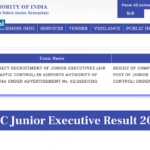In a world where international relations are becoming increasingly complex and interdependent, peaceful dispute resolution plays a critical role in maintaining global stability. The Permanent Court of Arbitration (PCA), one of the oldest international institutions of its kind, has stood the test of time as a cornerstone of international law and diplomacy. Established in the 19th century and still functioning today, the PCA provides a unique forum for the arbitration and resolution of disputes involving states, international organizations, and private entities.
This blog delves into the history, structure, functions, and landmark cases of the PCA, shedding light on its enduring relevance in international affairs.
Historical Background of the PCA
The PCA was established in 1899 at the First Hague Peace Conference, held in The Netherlands. This conference was convened on the initiative of Tsar Nicholas II of Russia, who sought to promote disarmament and peaceful resolution of conflicts among nations. The idea was to create a permanent institution that would facilitate arbitration as an alternative to war.
The Convention for the Pacific Settlement of International Disputes was signed by 26 countries, leading to the formal establishment of the PCA. A revised version of the Convention was adopted in 1907 at the Second Hague Conference, which expanded and clarified the Court’s functions.
What is the Permanent Court of Arbitration?
Despite its name, the PCA is not a “court” in the traditional sense. It does not have permanent judges or a fixed panel. Rather, it is an administrative organization that facilitates arbitration and other forms of dispute resolution.
The PCA provides services for the resolution of disputes that arise from international treaties, investment agreements, and territorial claims, among others. It functions as a neutral forum for legal proceedings involving states, international organizations, and sometimes private parties.
Members and Parties
The PCA currently has over 120 member states, including almost all major sovereign nations. These states are parties to the 1899 or 1907 Hague Conventions. Every member state has the right to nominate up to four jurists of recognized competence in international law to a panel of potential arbitrators, known as the Members of the Court.
However, these members do not sit permanently or hear cases unless appointed to do so. When a dispute is submitted to the PCA, the parties involved can select arbitrators from this panel or nominate others with appropriate expertise.
Structure and Administration
The PCA operates from its headquarters at the Peace Palace in The Hague, Netherlands. The organizational structure includes:
1. Administrative Council
This is the governing body of the PCA, comprising representatives of all member states. It oversees the policies, approves the budget, and ensures the Court’s smooth functioning.
2. International Bureau
The Bureau acts as the secretariat of the PCA. Headed by the Secretary-General, it provides support for arbitral tribunals and helps with logistics, legal research, and case management.
3. Panels of Arbitrators and Experts
Each member country nominates up to four arbitrators for renewable terms of six years. These experts form the pool from which parties can select arbitrators.
Jurisdiction and Types of Disputes
The PCA provides arbitration, conciliation, fact-finding, and other forms of dispute resolution services for a wide range of conflicts, such as:
- Interstate Disputes: Boundary disagreements, treaty interpretations, and sovereignty claims.
- Investor-State Disputes: Between foreign investors and host states under Bilateral Investment Treaties (BITs).
- Contractual Disputes: Between states and private parties or companies.
- Environmental Disputes: Involving transboundary harm or shared natural resources.
- Disputes Involving International Organizations
Its flexible framework allows it to cater to a variety of legal traditions and languages, making it an attractive forum for parties around the globe.
Procedures and Rules
PCA proceedings are highly flexible. The parties involved decide on most aspects of the procedure, such as:
- The number and identity of arbitrators.
- The procedural rules (often UNCITRAL Arbitration Rules are adopted).
- The location of the arbitration.
- The applicable law.
Once an arbitral tribunal is constituted, the parties present their case, submit evidence, and attend hearings. After reviewing the matter, the tribunal issues a legally binding final award.
Key Advantages of PCA Arbitration
- Neutrality and Impartiality
The PCA ensures an unbiased platform, free from political influence. - Flexibility
Parties have considerable freedom in shaping the process. - Confidentiality
Proceedings are private unless both parties agree to public disclosure. - Cost-Effective
Compared to domestic litigation or international courts, PCA arbitration can be more economical and time-efficient. - Expert Arbitrators
The PCA provides access to world-renowned legal experts.
Landmark Cases of the PCA
1. South China Sea Arbitration (Philippines v. China), 2016
One of the most high-profile arbitrations, the Philippines challenged China’s maritime claims in the South China Sea. The PCA ruled in favor of the Philippines, declaring that China’s “nine-dash line” claim had no legal basis under international law (UNCLOS). China, however, rejected the ruling.
2. Indus Waters Kishenganga Arbitration (Pakistan v. India), 2013
Pakistan initiated proceedings against India under the Indus Waters Treaty. The PCA ruled that India could proceed with its hydroelectric project but had to ensure minimum downstream flow to Pakistan. This case demonstrated the PCA’s role in sensitive geopolitical disputes.
3. Bangladesh v. India Maritime Boundary Dispute, 2014
This dispute over the Bay of Bengal maritime boundary was peacefully resolved through PCA arbitration. The ruling was accepted by both countries and significantly contributed to regional stability.
Role in Promoting International Law
The PCA is not just a venue for resolving disputes — it also plays an important role in:
- Developing international law
- Promoting rule-based global order
- Encouraging peaceful negotiations over military conflict
- Supporting capacity-building in developing countries
Its commitment to impartiality and justice makes it a powerful institution for conflict resolution in the modern world.
PCA vs. Other International Courts
The PCA is often confused with other bodies like the International Court of Justice (ICJ) or the International Criminal Court (ICC). Here’s how it differs:
| Feature | PCA | ICJ | ICC |
|---|---|---|---|
| Nature | Arbitral Institution | Judicial Body | Criminal Court |
| Jurisdiction | States, Orgs, Private Parties | States Only | Individuals (Criminal Cases) |
| Binding Judgments | Yes (Arbitral Awards) | Yes (Judgments) | Yes (Convictions/Sentences) |
| Consent Needed | Yes (By All Parties) | Yes (By All Parties) | Based on Rome Statute Jurisdiction |
| Confidential Proceedings | Often Yes | No | No |
Future Outlook of the PCA
In the face of rising global tensions, environmental challenges, and cross-border investments, the role of the PCA is more relevant than ever. Its ability to adapt to various legal systems and cultures positions it well for:
- Resolving climate change-related disputes
- Addressing cyber law and data sovereignty cases
- Mediating in cross-border e-commerce or intellectual property conflicts
As the international community leans toward diplomatic solutions over armed confrontation, the PCA will continue to serve as a trusted forum for peaceful, lawful dispute settlement.
Conclusion
The Permanent Court of Arbitration stands as a symbol of hope for countries, organizations, and individuals seeking justice outside the battlefield. It reflects the progress of international law from raw power to reasoned negotiation. By understanding the PCA, the world acknowledges that even the most complicated international disputes can be solved not by force, but by fair and impartial arbitration.
In an age where diplomacy is often tested, the PCA remains a beacon of international cooperation and peace.










